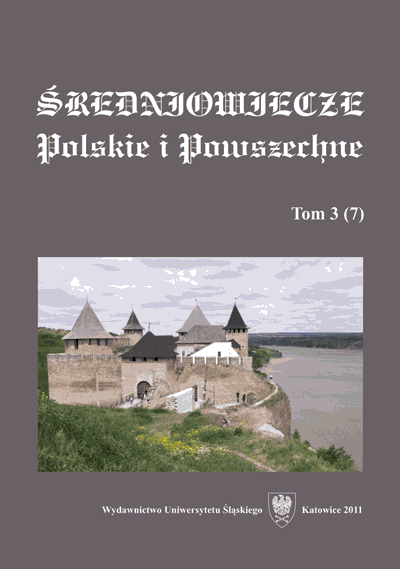Śląskie elity wobec zachodnioeuropejskich wzorców kulturowych w XIII wieku
Silesian elites and Western-European cultural models in the 13th century
Author(s): Krzysztof NowakSubject(s): History
Published by: Wydawnictwo Uniwersytetu Śląskiego
Summary/Abstract: Cultural influences on borderline area have fascinated people since the ancient times. A border, as a magic zone, separates what is known and familiar from what is different and often incomprehensible. It has always been a unique space, often suspended between „us” and „them”, between „our” and „their” culture, inspiring the creation of new values and cultural substrates. Silesia, as a borderline region was a place of a „clash” of different cultural „tectonic” surfaces, and, thus, the development of a specific community. The very process can be observed while investigating an attitude of Silesian elites towards Western-European cultural models in the 13th century, when a substantial attenuation of a central administration and a collapse of the idea of a country allowed for being opened to new trends, influences and fashion. And it did not have to mean, as an old historiography wanted, a Germanization or (de)Polonization, but localization, understood as the formation of a unique culture through processes of exchange, integration and permeation. A contemporary researcher can notice it at best on the example of sfragistic, heraldic or iconographic sources, but also influence on the literature, language or the most popular cultural motives.
Journal: Średniowiecze Polskie i Powszechne
- Issue Year: 2011
- Issue No: 7
- Page Range: 15-24
- Page Count: 10
- Language: Polish

